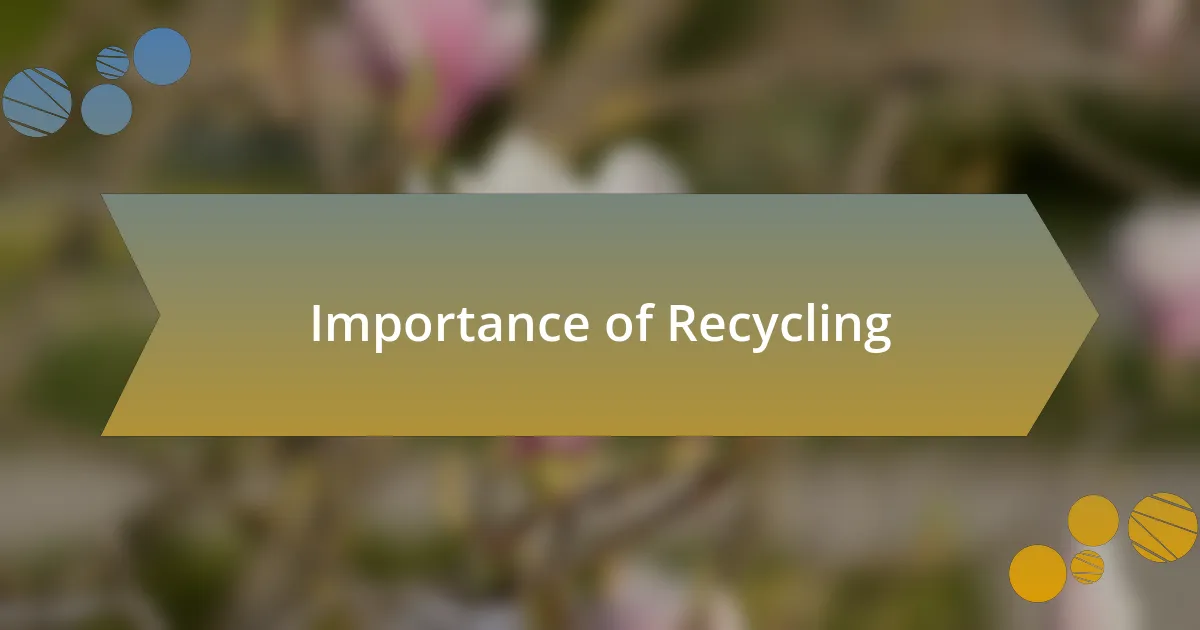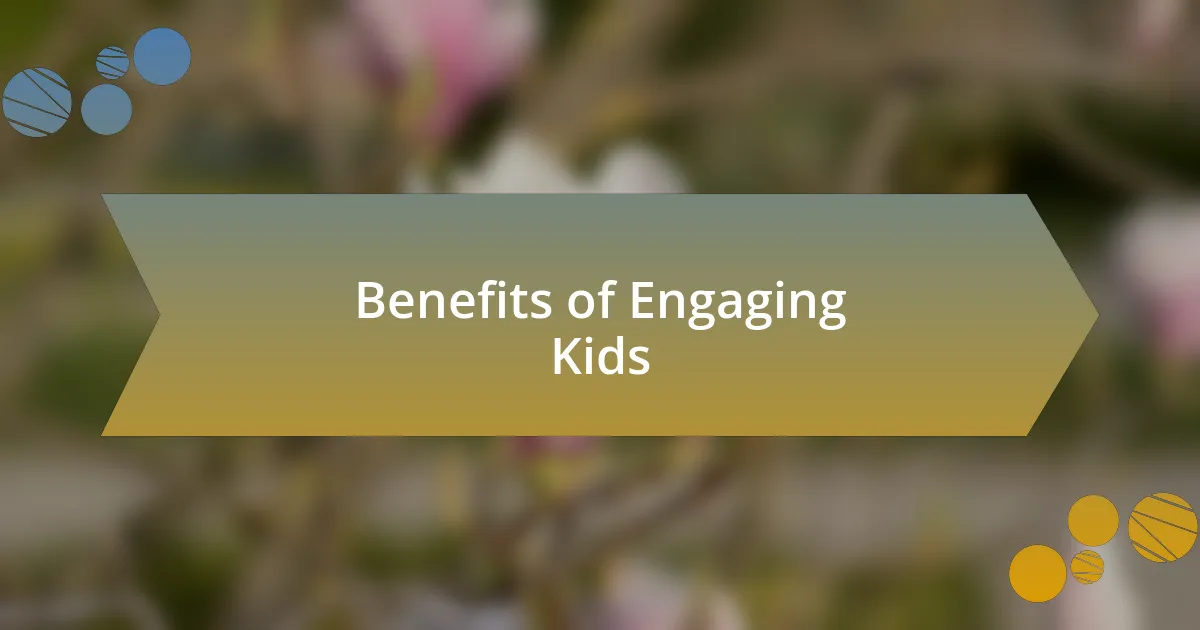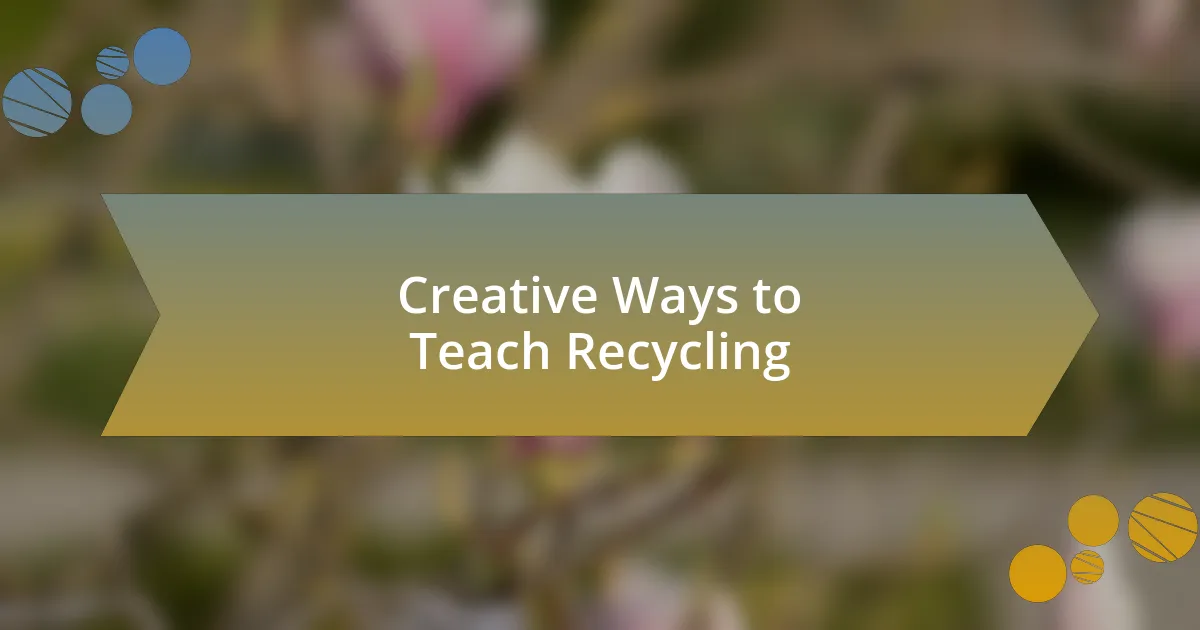Key takeaways:
- Sustainable projects cultivate eco-conscious values in children, fostering a culture of responsibility towards the environment.
- Engaging kids in recycling promotes creativity and a sense of empowerment, helping them realize their ability to make a difference.
- Creative recycling projects, such as building bird feeders or seed bombs, are effective ways to teach kids about sustainability while having fun.
- Involving children in discussions and activities around recycling can lead to lasting habits and a deeper understanding of their environmental impact.

Understanding Sustainable Projects
Sustainable projects are essential steps toward preserving our planet for future generations. I remember when my children first grasped the idea that our actions today affect the world they’ll live in tomorrow. That realization sparked a thoughtful conversation at the dinner table, leaving me to wonder how many parents have the opportunity to plant that seed of awareness in their kids.
I often think about how sustainability touches every aspect of life—it’s more than just recycling or conserving water. It’s about creating a mindset, fostering a culture where our children understand the importance of making eco-friendly choices. I recall my daughter’s excitement when we transformed our old clothes into a patchwork rug together; it was more than a craft—it was a lesson in repurposing, one that I hope stays with her.
When we engage in sustainable projects, we’re not just ticking a box; we’re cultivating values that our kids will carry into adulthood. Have you ever watched the light in your child’s eyes when they realize they can make a difference? That moment reinforces my belief that discussions about sustainability shouldn’t be reserved for the classroom. They’re conversations that can start at home, shaping a more environmentally conscious future one small project at a time.

Importance of Recycling
Recycling is vital for reducing waste and conserving natural resources. I still vividly remember the first time my son and I sorted through our recyclables in the kitchen; it felt almost like a game. Watching him get excited about figuring out which items belonged in the blue bin made me realize how easily children can embrace eco-friendly practices when they see their importance.
Every item we recycle has the potential to be transformed into something new, which truly illustrates the concept of a circular economy. It’s incredible to think about how that simple plastic bottle can become a part of a new product instead of ending up in a landfill. This understanding struck me one afternoon while we were crafting with recycled materials; my daughter asked if she could turn an old cereal box into a bird feeder. Those creative conversations lay the groundwork for their future responsibility toward the planet.
Moreover, recycling helps reduce greenhouse gas emissions, which is a pressing concern in today’s world. I often ponder, what kind of legacy are we leaving for our children if we don’t instill this sense of responsibility in them? When my kids learned that recycling can combat climate change, their enthusiasm shifted from casual participation to a heartfelt commitment. It’s these moments that reaffirm my belief in the power of educating our young ones about recycling—not just as a chore, but as a way to protect the home they’ll inherit.

Benefits of Engaging Kids
Engaging kids in recycling offers a sense of empowerment that I never anticipated. When my children participated in our local clean-up day, they walked away buzzing with pride, knowing they played a role in making their community cleaner. It’s a beautiful reminder that when young ones contribute to something greater, they start to realize they can make a difference—no matter how small their actions may seem.
I’ve noticed that when my kids engage in recycling projects, they develop a stronger connection to the environment. One weekend, we decided to create art from recycled paper. Witnessing their enthusiasm as they turned scraps into something beautiful ignited a creative spark in them. This not only taught them about recycling but also fostered their creativity and problem-solving skills.
Additionally, involving children in recycling cultivates habits that can last a lifetime. I remember my daughter’s face lighting up when she suggested starting a recycling club at her school. That proud moment showed me the potential of her initiative—it wasn’t just about recycling at home anymore, but about leading a movement among her peers. It’s experiences like these that motivate me to continue engaging my kids and watch them evolve into environmentally aware individuals.

Fun Recycling Projects for Kids
One of the most enjoyable projects we embarked on was building a bird feeder from old plastic bottles. My kids were thrilled as they transformed something destined for the trash into a home for local birds. There’s something magical about seeing their expressions light up when they spot a bird enjoying their handiwork—it’s a tangible reward for their creativity and eco-awareness.
Another great project was creating seed bombs from old newspapers and leftover seeds. My son was so proud when he threw these little biodegradable balls into our yard, knowing he was helping flowers and plants flourish. It made me realize how simple activities can instill a sense of responsibility for nature in children; I often wonder, could such straightforward actions leave a lasting impression on their perception of environmental stewardship?
We also turned soda cans into colorful garden art, which brought our backyard to life. I remember my daughter carefully painting each can, excitedly discussing where we should place them for maximum visibility. This project not only enhanced our garden but also sparked conversations about art, sustainability, and the beauty of reimagining waste. It truly exemplifies how fun recycling can be, turning old items into something uniquely ours.

Creative Ways to Teach Recycling
Getting kids involved in recycling can be a delightful journey. For instance, I started a “Recycling Art Wall” in our home. We hung up pieces made from recycled materials like bottle caps and cardboard. My children loved seeing their creations displayed, and it sparked discussions about what else we could make. I often wonder how these small acts of creativity could inspire a lifetime of eco-consciousness.
Another effective approach we took was implementing a “Green Scavenger Hunt” around our neighborhood. Armed with bags and a checklist, the kids and I searched for recyclable items in our environment. As we collected cans and plastic bottles, my heart swelled with pride at their eagerness to contribute to our planet. This activity not only helped them learn about recycling firsthand but also fostered a sense of community responsibility—how often do we think about the impact of our collective efforts?
Lastly, I found that storytelling can be a powerful tool in teaching recycling. We would read books about the journey of trash, transforming waste into wonderful stories. I personally noticed how my kids became more engaged when they could relate to characters that faced environmental challenges. Could it be that understanding these narratives ignites their passion for sustainability even further?

My Personal Recycling Journey
It all began one Saturday morning when I stumbled upon an old, dusty box in the garage filled with various recyclables. I invited my kids to help sort through it, treating it like a treasure hunt. Their excitement was palpable as they uncovered hidden gems like old magazines and empty jars. This simple act not only sparked their curiosity about what can be recycled but also fostered a collaborative spirit as we bonded over our discoveries.
As weeks went by, my kids and I made it a ritual to walk to our local recycling center every month. The first time we went, I could see their eyes widen at the sheer volume of items being processed. They eagerly asked questions about where everything went next, and I realized how truly curious they were about the recycling process. Witnessing their genuine interest made me reflect—how often do we connect our daily actions to larger environmental systems?
I also remember a time when an inspiring talk from a visiting environmentalist at their school ignited a new level of engagement. The next day, they excitedly approached me, insisting we have a family meeting to discuss our recycling habits. I was touched that they wanted to lead the charge! Their passion reminded me that kids can sometimes teach us more than we realize, reinforcing my belief that to truly nurture a sustainable mindset, we must listen to—and learn from—their insights.